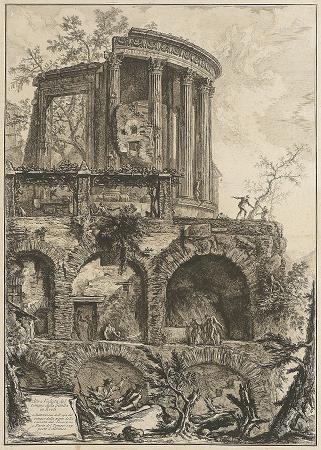Tivoli. Tivoli is a town and comune in Lazio, central Italy, about 30 kilometres east-north-east of Rome, at the falls of the Aniene river where it issues from the Sabine hills. The city offers a wide view over the Roman Campagna. Gaius Julius Solinus cites Cato the Elder's lost Origines for the story that the city was founded by Catillus the Arcadian, a son of Amphiaraus, who came there having escaped the slaughter at Thebes, Greece. Catillus and his three sons Tiburtus, Coras, and Catillus drove out the Siculi from the Aniene plateau and founded a city they named Tibur in honor of Tiburtus. According to a more historical account, Tibur was instead a colony of Alba Longa. Historical traces of settlement in the area date back to the 13th century BC. The city's name may share a common root with the river Tiber and the Latin praenomen Tiberius. Virgil in his Aeneid makes Coras and the younger Catillus twin brothers and the leaders of military forces from Tibur aiding Turnus. From Etruscan times Tibur, a Sabine city, was the seat of the Tiburtine Sibyl. There are two small temples above the falls, the rotunda traditionally associated with Vesta and the rectangular one with the Sibyl of Tibur, whom Varro calls Albunea, the water nymph who was worshipped on the banks of the Anio as a tenth Sibyl added to the nine mentioned by the Greek writers. In the nearby woods, Faunus had a sacred grove. During the Roman age Tibur maintained a certain importance, being on the way that Romans had to follow to cross the mountain regions of the Apennines towards the Abruzzo, the region where lived some of its fiercest enemies such as Volsci, Sabini and Samnites. At first an independent ally of Rome, Tibur allied itself with the Gauls in 361 BC. Vestiges remain of its defensive walls of this period, in opus quadratum. In 338 BC, however, Tibur was defeated and absorbed by the Romans. The city acquired Roman citizenship in 90 BC and became a resort area famed for its beauty and its good water, and was enriched by many Roman villas. The most famous one, of which the ruins remain, is the Villa Adriana. Maecenas and Augustus also had villas at Tibur, and the poet Horace had a modest villa: he and Catullus and Statius all mention Tibur in their poems. In 273, Zenobia, the captive queen of Palmyra, was assigned a residence here by the Emperor Aurelian. The 2nd-century temple of Hercules Victor is being excavated. The present Piazza del Duomo occupies the Roman forum. The name of the city came to be used in diminutive form as Tiburi instead of Tibur and so transformed through Tibori to Tiboli and finally to Tivoli. But its inhabitants are still called Tiburtini and not Tivolesi. In 547, in the course of the Gothic War, the city was fortified by the Byzantine general Belisarius, but was later destroyed by Totila's army. After the end of the war it became a Byzantine duchy, later absorbed into the Patrimony of St. Peter. After Italy was conquered by Charlemagne, Tivoli was under the authority of a count, representing the emperor. From the 10th century onwards, Tivoli, as an independent commune governed by its elected consuls, was the fiercest rival of Rome in the struggle for the control over the impoverished central Lazio. Emperor Otto III conquered it in 1001, and Tivoli fell under the papal control. Tivoli however managed to keep a level of independence until the 15th century: symbols of the city's strength were the Palace of Arengo, the Torre del Comune and the church of St. Michael, all built in this period, as well as the new line of walls, needed to house the increasing population. Reminders of the internal turbulence of communal life are the tower houses that may be seen in Vicolo dei Ferri, Via di Postera, Via del Seminario and Via del Colle. In the 13th century Rome imposed a tribute on the city, and gave itself the right to appoint a count to govern it in conjunction with the local consuls. In the 14th century Tivoli sided with the Guelphs and strongly supported Urban VI against Antipope Clement VII. King Ladislaus of Sicily was twice repulsed from the city, as was the famous condottiero Braccio da Montone. In the city there was also a Jewish community. During the Renaissance, popes and cardinals did not limit their embellishment program to Rome; they also erected buildings in Tivoli. In 1461 Pope Pius II built the massive Rocca Pia to control the always restive population, and as a symbol of the permanence of papal temporal power here. From the 16th century the city saw further construction of villas.
more...














